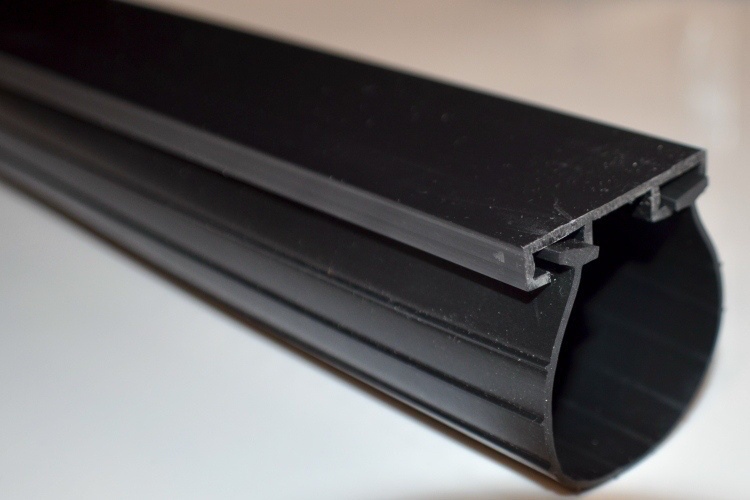Common Garage Door Seal Types (and How to Maintain Them)

When you think of your Parker or Broomfield garage door installation, generally you think of the material, the pattern, the often broken garage door springs and maybe, just maybe, even the tracks. But do you ever think of the seals around the outside?
These are the unsung heroes of garage doors. They serve so many purposes, and yet often go unnoticed and forgotten. Let us explain how they work and why they’re so important to the functioning of your overhead door installation.
About Garage Door Seals
Garage door seals are a vital part of your garage door installation. They are usually made of rubber or vinyl and their purpose is to guard against rain, snow, ice and gusts of wind – preventing bad weather from getting inside your garage.
It’s not just weather they keep out, either. They stop bugs, leaves and dust from getting in, and stop heat and warmth from getting out! All in all, they’re pretty important.
Types of Garage Door Seals
There are various different types of garage door seals or, as they are sometimes called, gaskets.
Garage door seals are essential for keeping out drafts, moisture, and debris. The right seal can help weatherproof your garage, preventing long-term issues like dampness and damage. Below is a breakdown of common garage door seal types, categorized as bottom seals and specialist seals, along with their key characteristics.
| Seal Type | Category | Characteristics |
|---|---|---|
| Bulb Seal | Bottom Seal | Circular shape at the bottom with a large T shape on the top. Commonly used for effective weatherproofing. |
| T-Type Seal | Bottom Seal | Forms an inverted T shape when viewed from the side. Installed with single-channel retainers. |
| Beaded Seal | Bottom Seal | T-shaped seal designed for double-channel retainers. Provides a snug fit for improved insulation. |
| J-Type Seal | Bottom Seal | Forms a J shape on either side of the door. Used for single-channel retainers. |
| Brush Seal | Specialist Seal | Consists of brush-like bristles, commonly used on commercial rolling or sheet doors. Provides excellent debris protection but is less effective against water. |
| Threshold Seal | Specialist Seal | Attached to the floor rather than the door. Works with bottom seals to offer superior protection against rain, wind, and debris. Designed to withstand vehicle weight. |
Regularly inspecting your garage door seals ensures they remain intact and functional. If a seal becomes damaged, replacing it promptly will help maintain your garage’s insulation and security.
All garage door installations will have some form of seal that goes along the bottom. These are, perhaps unsurprisingly, known as the bottom seal – their purpose is to bridge the gap between the garage door and the concrete floor underneath.
Most doors also have side seals, too. Again, the purpose of these is to keep rain, snow and ice out, and keep heat and warmth in.
Maintaining Your Garage Door Seal
- Inspect Regularly — Check your seal every few months for signs of wear, cracks, or gaps. Early detection can prevent larger issues down the line.
- Clean the Seal — Use an all-purpose cleaner and a rag to remove dirt and debris. Regular cleaning helps prevent deterioration from accumulated grime.
- Lubricate the Seal — Apply a silicone-based lubricant every three months, especially after hot weather. This keeps the seal flexible and prevents it from drying out or cracking.
- Check Seal Alignment — Ensure the seal is properly aligned with the door and floor. Misalignment can reduce effectiveness and cause uneven wear.
- Replace When Necessary — If the seal shows significant damage or fails to provide adequate protection, replace it promptly to maintain the integrity of your garage.
Overhead door repair and maintenance isn’t to be taken lightly – keep on top of it!
Replacing Your Garage Door Seal
Whilst it’s important to maintain the seal on your garage door installation, it's also worth noting that eventually, they all do need replacing.
When cleaning and maintaining your seals, look closely at whether they are cracked, completely dry or no longer flexible. If this is the case, you may need to bring in some help to fully replace them, as they can’t function like they should.
Here To Help
Looking for some help with your garage door? Rather than searching ‘garage door repair near me’ in Google, how about just giving us a call? We specialize in garage door repair and stuck garage doors.
Here at A Better Garage Door Inc., we have been working in the garage door repair and sales industry for a long time. Our overhead door company stays ready to help with any garage door installation needs you might have. Get in touch today!